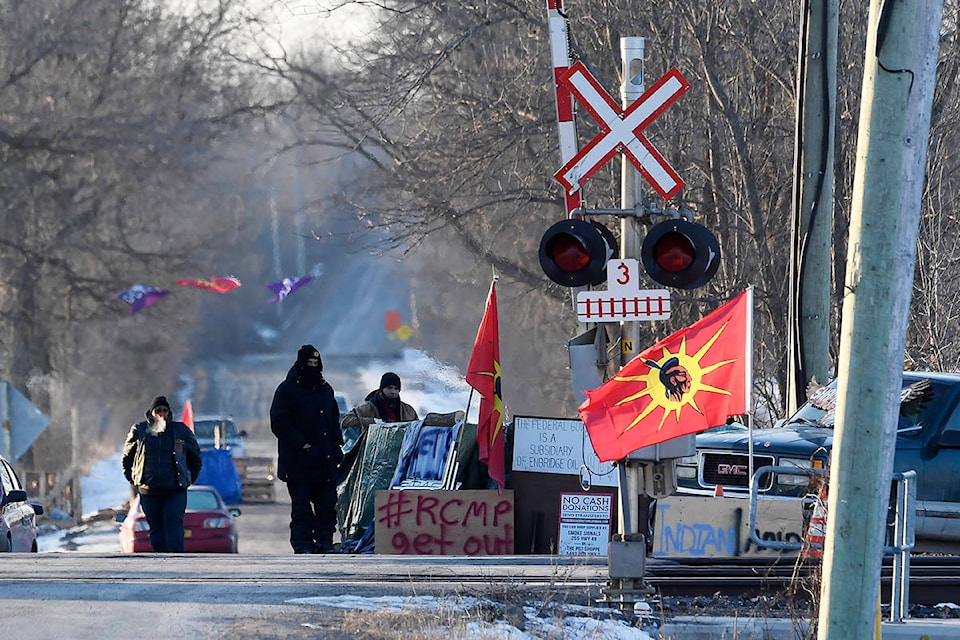It would be a mistake to assume that the dispute between Wet’suwet’en traditional leaders and the Coastal GasLink pipeline project can be resolved in a column.
It has taken generations to get to this point; it will take more than 550 words to get past it.
What the dispute has revealed, however, is the absolute urgency for action.
Not the kind that some suggest. Sending in the troops, or ordering police to dismantle blockades has failed to produce longterm solutions in the past. It will again.
What’s needed is a commitment by First Nations, provincial and federal governments to resolve the longstanding land title and governance issues that lie at the core of the dispute.
The Wet’suwet’en blockade is the symptom of a bigger problem. It is a byproduct of British Columbia’s messy and unfinished treaty process, and a failed and broken federal Indian Act.
How dysfunctional it has become can be seen in the Wet’suwet’en First Nation itself. While some British Columbians may have just heard about Gaslink’s plan to build a $6 billion pipeline from Northeastern B.C. to a $40 billion gas liquefaction plant and export terminal at Kitimat, the Wet’suwet’en have been debating it for years.
The discussions were not easy, and even today the debate is polarizing the community. But in the end, the elected band councils supported the project, arguing construction would provide opportunity and employment for their members.
What Coastal Gaslink failed to do was convince the Wet’suwet’en hereditary chiefs.
And there’s the rub.
Elected band councils are the product of the Indian Act – a notoriously paternal piece of 19th century legislation. Its primary function was to promote the rapid assimilation and cultural extinction of First Nations people across Canada. It brought residential schools, subjugated women, squelched traditional languages, and even barred dancing and the wearing of regalia.
It also provided a mechanism for bands to manage their own reserve lands through elected band councils.
The challenge in B.C. is that reserve lands make up only a fraction of the traditional territory claimed by First Nations.
And because few treaties have ever been signed in this province, these First Nations have never relinquished their title or rights to that land – a point supported by the Canadian Supreme Court in its 1997 Delgamuukw ruling.
It is this traditional territory that the Wet’suwet’en hereditary chiefs claim authority over.
That claim has created a simple narrative: Traditional leaders, defending traditional territory from colonial and industrial incursion.
Dismissed in this narrative, of course, is the support from the 20 First Nations along the pipeline route and the extensive consultations with those nations that have taken place to get to this point.
The question of who speaks for the Wet’suwet’en is something the Wet’suwet’en will have to decide themselves.
But it is a question that will continue to be asked in other Indigenous communities until the issue of land claims in B.C. is resolved. The treaty process – moving as slowly as it is – will not only define aboriginal rights and title, but provide agreed-upon governance structures.
Without that resolution there will be no clarity, no certainty, and little chance of the economic prosperity so many First Nations people are calling for.
Greg Knill is a columnist and former Black Press editor. Email him at greg.knill@blackpress.ca.
Like us on and follow us on .



